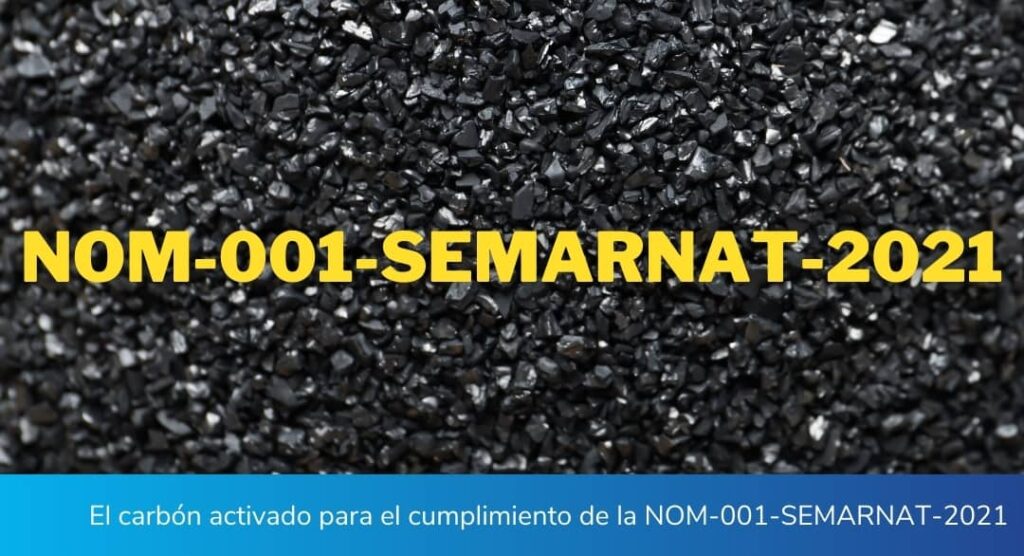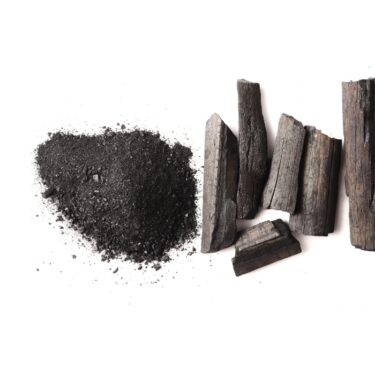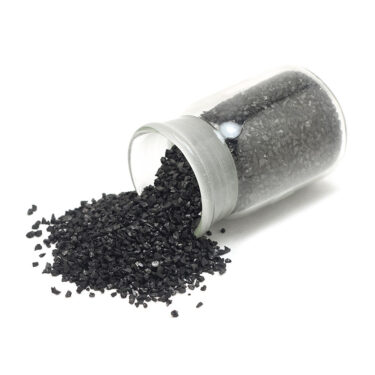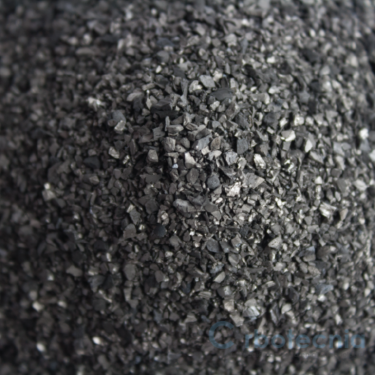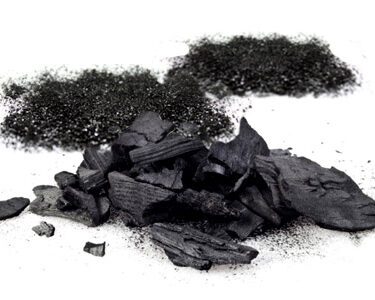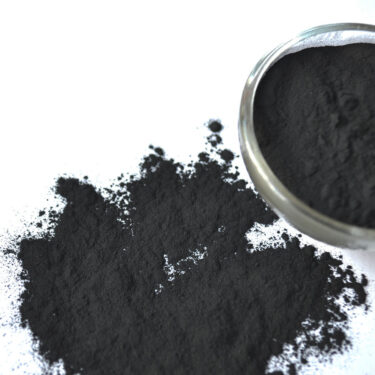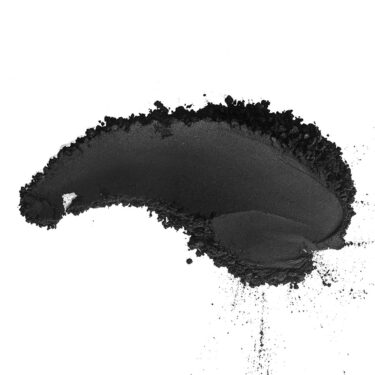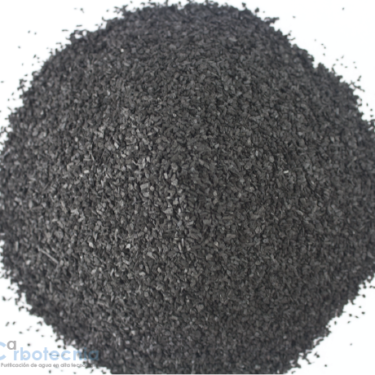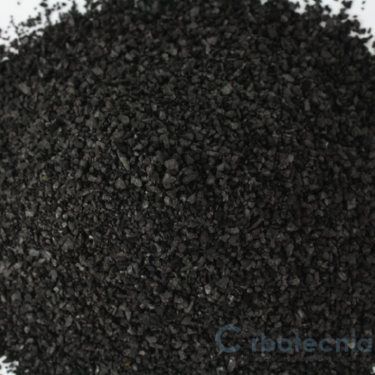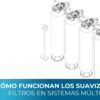New limits allowed by NOM-001-SEMARNAT-2021 and how activated carbon can comply with it.
NOM-001-SEMARNAT establishes the permissible limits for pollutants in wastewater discharges into receiving water bodies owned by the nation. The limits established by the modification made in 2000 to the 1996 version of this standard (NOM-001-SEMARNAT-1996) applied until March 10, 2023.
On March 11, 2022, a new version of the standard was published: NOM-001-SEMARNAT-2021, which establishes the permissible limits indicated in the following two tables:
TABLE 1 – PERMISSIBLE LIMITS
|
Parameters (*)
(milligrams per liter, except when specify) |
Rivers, streams, canals,
drains |
Reservoirs, lakes and
lagoons |
Mexican marine areas
|
Soil
|
|||||||||||||||
|
Irrigation of green areas
|
Infiltration and other irrigation
|
Karst
|
|||||||||||||||||
|
P.M
|
P.S.
|
V.I.
|
P.M
|
P.S.
|
V.I.
|
P.M
|
P.S.
|
V.I.
|
P.M
|
P.S.
|
V.I.
|
P.M
|
P.S.
|
V.I.
|
P.M
|
P.S.
|
V.I.
|
||
|
Temperature (°C)
|
35
|
35
|
35
|
35
|
35
|
35
|
35
|
35
|
35
|
35
|
35
|
35
|
35
|
35
|
35
|
35
|
35
|
35
|
|
| Fats and Oils |
15
|
18
|
21
|
15
|
18
|
21
|
15
|
18
|
21
|
15
|
18
|
21
|
15
|
18
|
21
|
15
|
18
|
21
|
|
|
Total Suspended Solids
|
60
|
72
|
84
|
20
|
24
|
28
|
20
|
24
|
28
|
30
|
36
|
42
|
100
|
120
|
140
|
20
|
24
|
28
|
|
| Chemical Oxygen Demand |
150
|
180
|
210
|
100
|
120
|
140
|
85
|
100
|
120
|
60
|
72
|
84
|
150
|
180
|
210
|
60
|
72
|
84
|
|
| Total Organic Carbon |
38
|
45
|
53
|
25
|
30
|
35
|
21
|
25
|
30
|
15
|
18
|
21
|
38
|
45
|
53
|
15
|
18
|
21
|
|
|
Total Nitrogen
|
25
|
30
|
35
|
15
|
25
|
30
|
25
|
30
|
35
|
NA
|
NA
|
NA
|
NA
|
NA
|
NA
|
15
|
25
|
30
|
|
|
Total Phosphorus
|
15
|
18
|
21
|
5
|
10
|
15
|
15
|
18
|
21
|
NA
|
NA
|
NA
|
NA
|
NA
|
NA
|
5
|
10
|
15
|
|
|
Eggs of
Helminths (eggs/liter)
|
NA
|
NA
|
NA
|
NA
|
NA
|
NA
|
NA
|
NA
|
NA
|
1
|
|||||||||
|
Escherichia coli,
(MPN/100 ml) |
250
|
500
|
600
|
250
|
500
|
600
|
250
|
500
|
600
|
250
|
500
|
600
|
250
|
500
|
600
|
50
|
100
|
200
|
|
|
Enterococci
fecal* (MPN/100 ml)
|
250
|
400
|
500
|
250
|
400
|
500
|
250
|
400
|
500
|
250
|
400
|
500
|
250
|
400
|
500
|
50
|
100
|
200
|
|
|
pH
(UpH)
|
6-9
|
||||||||||||||||||
| True color |
Wavelength
|
Maximum spectral absorption coefficient
|
|||||||||||||||||
|
436 nm
|
7,0 m -1
|
||||||||||||||||||
|
525 nm
|
5,0 m -1
|
||||||||||||||||||
|
620 nm
|
3,0 m -1
|
||||||||||||||||||
| Acute toxicity (UT) |
2 after 15 minutes of exposure
|
||||||||||||||||||
|
N.A: Not Applicable
P.M: Monthly Average
P.S: Daily Average
V.I: Instantaneous Value
MPN: Most probable number
UpH: pH units
TU: Toxicity Units
* If Chlorides is less than 1000 mg/L, COD is analyzed and reported.
* If Chlorides is greater than or equal to 1000 mg/L, TOC is analyzed and reported.
* If the electrical conductivity is less than 3500 µS/cm, E. coli is analyzed and reported.
* If the electrical conductivity is greater than or equal to 3500 µS/cm, fecal Enterococci are analyzed and reported.
Electrical conductivity and chloride determinations do not require the accreditation and approval of the corresponding entity.
|
|||||||||||||||||||
TABLE 2 – PERMISSIBLE LIMITS FOR METALS AND CYANIDES
|
Parameters
(milligrams per liter) |
Rivers, streams, canals,
drains |
Reservoirs, lakes and lagoons
|
Marine areas
mexican |
Soil
|
||||||||||||||
|
Irrigation of green areas
|
Infiltration and other irrigation
|
Karst
|
||||||||||||||||
|
P.M.
|
P.S.
|
V.I.
|
P.M.
|
P.S.
|
V.I.
|
P.M.
|
P.S.
|
V.I.
|
P.M.
|
P.S.
|
V.I.
|
P.M.
|
P.S.
|
V.I.
|
P.M
|
P.S.
|
V.I.
|
|
|
Arsenic
|
0,2
|
0,3
|
0,4
|
0,1
|
0,15
|
0,2
|
0,2
|
0,3
|
0,4
|
0,2
|
0,3
|
0,4
|
0,1
|
0,15
|
0,2
|
0,1
|
0,15
|
0,2
|
|
Cadmium
|
0,2
|
0,3
|
0,4
|
0,1
|
0,15
|
0,2
|
0,2
|
0,3
|
0,4
|
0,05
|
0,075
|
0,1
|
0,1
|
0,15
|
0,2
|
0,05
|
0,075
|
0,1
|
|
Cyanide
|
1
|
2
|
3
|
1
|
1,5
|
2
|
2
|
2,50
|
3
|
2
|
2,5
|
3
|
1
|
1,50
|
2
|
1
|
1,5
|
2
|
|
Copper
|
4
|
5
|
6
|
4
|
5
|
6
|
4
|
5
|
6
|
4
|
5
|
6
|
4
|
5
|
6
|
4
|
5
|
6
|
|
Chrome
|
1
|
1,25
|
1,5
|
0,5
|
0,75
|
1
|
1
|
1,25
|
1,5
|
0,5
|
0,75
|
1
|
0,5
|
0,75
|
1
|
0,5
|
0,75
|
1
|
|
Mercury
|
0,01
|
0,015
|
0,02
|
0,005
|
0,008
|
0,01
|
0,01
|
0,015
|
0,02
|
0,005
|
0,008
|
0 01
|
0,005
|
0,008
|
0,01
|
0,005
|
0,008
|
0,01
|
|
Nickel
|
2
|
3
|
4
|
2
|
3
|
4
|
2
|
3
|
4
|
2
|
3
|
4
|
2
|
3
|
4
|
2
|
3
|
4
|
|
Lead
|
0,2
|
0,3
|
0,4
|
0,2
|
0,3
|
0,4
|
0,5
|
0,75
|
1
|
0,5
|
0,75
|
1
|
0,2
|
0,3
|
0,4
|
0,2
|
0,3
|
0,4
|
|
Zinc
|
10
|
15
|
20
|
10
|
15
|
20
|
10
|
15
|
20
|
10
|
15
|
20
|
10
|
15
|
20
|
10
|
15
|
20
|
|
Parameters
measured in full way |
P.M: Monthly Average
P.S: Daily Average
V.I: Instantaneous Value
|
|||||||||||||||||
Of the parameters listed in the tables above, all but two, Acute Toxicity and True Color, began to apply as of April 3, 2023. The two aforementioned will apply as of March 12, 2026.
The main changes with respect to the previously applicable limits are as follows:
- The permissible limit in Biochemical Oxygen Demand (BOD5) changed by Chemical Oxygen Demand (COD) or Total Organic Carbon (TOC), in case the chloride concentration is higher than 1000 mg/L (the COD test does not apply to waters with high salinity). The reason for this change is that BOD5 does not detect organic compounds that are not biodegradable; in many cases, these represent a significant percentage of the organic load and are toxic to living organisms.
- The limit as to True Color was not previously established. The color, in addition to its unpleasant aesthetic effect, usually corresponds to compounds that are also toxic.
- The acute toxicity limit was also not established.
PARAMETERS REGULATED BY NOM-001-SEMARNAT-2021 THAT CAN BE MET WITH ACTIVATED CARBON.
Activated carbon is an adsorbent for organic compounds.
Fats and oils, chemical oxygen demand and total organic carbon are parameters that correspond entirely to organic compounds.
True Color and Acute Toxicity parameters do not always correspond to organic compounds, but do in most cases.
In the table shown above, these five parameters are marked in yellow.
From an economic point of view, activated carbon is a competitive method to reduce the presence of organic compounds present in water, when the following two conditions are met:
a) The total concentration of these is less than about 30 mg/L (corresponding to a COD of about 100 mg/L or a TOC of about 25 mg/L); and
b) It is required to reach very low concentrations.
Regarding condition (a), activated carbon, either in granular or powdered form, is applied as tertiary treatment of wastewater containing organic compounds. This means that, in the vast majority of cases, such waters will have been previously required:
- Primary treatment (which may include prefiltration, pH adjustment, coagulation, flocculation, clarification); and
- Secondary treatment (this is biological treatment and may include anaerobic and/or aerobic).
Condition (b) is present in the case of the application of activated carbon as tertiary treatment, since the limits established by the new standard are low.
After tertiary treatment with activated carbon, the water requires disinfection.
SOLUTION WITH BIOLOGICAL ACTIVATED CARBON
In tertiary wastewater treatment where biodegradable pollutants are present, granular activated carbon can act as “biological activated carbon”. This method is feasible when the water does not contain a significant concentration of toxic or difficult to degrade compounds.
The job of an activated carbon is to adsorb and concentrate organic molecules. Within a short time, bacteria begin to form and attach themselves to the carbon surface. Bacteria convert organic compounds into methane, carbon dioxide, water and more bacteria. The conversion of these compounds releases sites where the carbon can continue to adsorb more of them.
Eventually, the excess bacteria form a sludgy biomass that clogs the charcoal bed. This excess biomass is removed by backwashing. Proper backwashing (in which the carbon bed is expanded, and carried out as often as required) can make the carbon last much longer. There are cases where this dynamic can do more than a standard activated carbon can do (thus, the carbon is changed not because it is depleted, but because it is eroded and lost during backwashing).
It is important to mention that the water treated by this dynamic does not reach the typically low levels achieved by an activated carbon, but the reduction in the concentration of total organic carbon is significant.
If you are not complying with the new limits established by NOM-001-SEMARNAT-2021, Carbotecnia can support you in the technical and economic evaluation of the possible solution with activated carbon. Contact us!
DEVELOPMENT AND REVISIONS
Prepared by: LCB 2 Feb 2024
Revised: GGC 2 Feb 2024
Share:
If you need more information, please contact us.
Some products that may interest you
-
AA-3 Activated carbon to reduce color and flavor in tequila and other distilled spirits
Add to quote -
Micro K Coconut shell activated carbon
Add to quote -
Micro 4 LF Coconut shell activated carbon free of fines
Add to quote -
Megapol C – Wood powder activated carbon
Add to quote -
Megapol E – Wood powdered activated charcoal
Add to quote -
Micropol 4 200 – Coconut shell powdered activated carbon
Add to quote -
Mega – Wood granular activated carbon
Add to quote -
Gama L – Lignite coal mineral activated carbon
Add to quote

